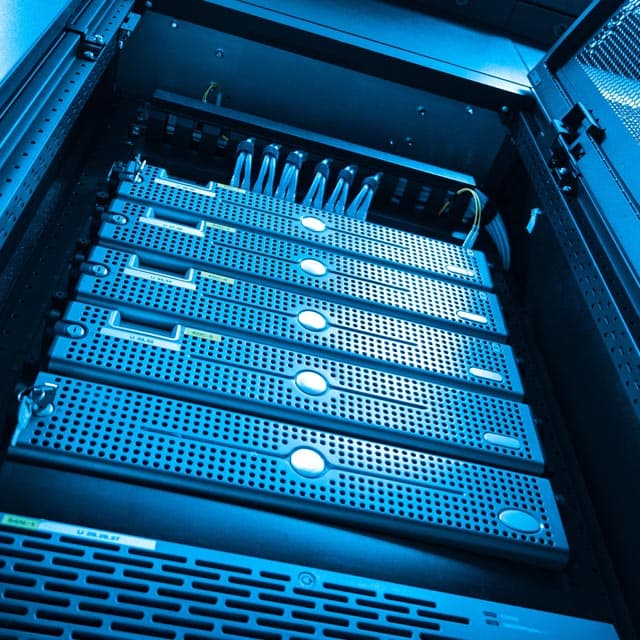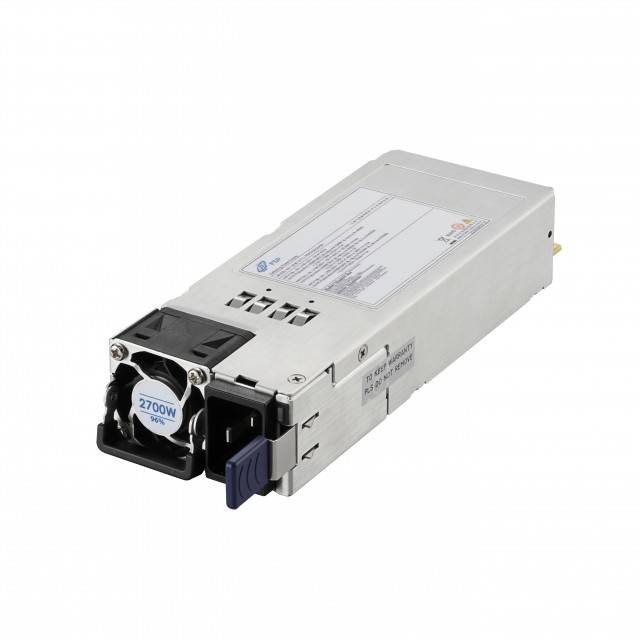Immersion Cooling Revolution: Building Next-Generation Data Centers with High-Efficiency Power Supplies

Author: FSP Group
As the demand for AI and high-performance computing (HPC) continues to surge, data centers are facing growing challenges in both power consumption and heat dissipation. Traditional air-cooling technologies can no longer effectively handle the massive heat generated by data-intensive operations, paving the way for the rise of immersion cooling. By submerging servers directly into non-conductive cooling fluids, immersion cooling significantly improves heat dissipation efficiency and reduces overall energy consumption. However, this advanced cooling technology also imposes stricter requirements on power supply stability, corrosion resistance, and conversion efficiency. Inadequate power design can lead to energy losses or system instability.
FSP Group, leveraging its profound expertise in power technology and customization capabilities, has developed high-performance power supply products specifically designed for immersion cooling systems. These solutions help enterprises build data centers that are more stable, energy-efficient, and sustainable. This article explores the principles and evolution of immersion cooling, explains why it is emerging as the mainstream thermal management solution for future data centers, and discusses how to select power solutions that combine high efficiency with long-term durability in high-density computing environments.
Evolution of Data Center Cooling
With the increasing prevalence of AI applications in recent years, the demand for "computing power" has significantly risen, leading major tech giants to actively build data centers to meet future computing needs. Traditional air-cooling methods can no longer meet efficiency requirements, prompting continuous innovation in heat dissipation and cooling technologies. While modern precision cooling solutions can effectively improve heat dissipation efficiency, they are still subject to environmental constraints (such as strict control of humidity and dust, otherwise, they may cause static electricity or equipment short circuit risks). This has led to the development of immersion cooling, a groundbreaking alternative solution applied to various high-density computing scenarios, effectively solving space constraints and maintaining high heat dissipation efficiency. Next, we will analyze how immersion cooling enhances data center operations by improving efficiency and sustainability. We will also highlight the key factors for ensuring efficient and reliable power delivery in such environments, providing valuable insights for readers.
What is Immersion Cooling and How Does It Work?
Immersion cooling is an advanced thermal management technology in which servers are fully submerged in a non-conductive cooling liquid, such as mineral oil or synthetic fluids. By allowing the liquid to come into direct contact with electronic components, heat can be rapidly absorbed and dissipated. According to U.S.-based research firm Data Center Frontier, immersion cooling can reduce Power Usage Effectiveness (PUE) to as low as 1.03. Compared to traditional air-cooled data centers, which typically have a PUE of around 1.5, this represents a 40% to 50% improvement in energy efficiency. Furthermore, Global Growth Insight reports that existing immersion cooling deployments have demonstrated an average 25% increase in server hardware lifespan.
Impact of Immersion Cooling on Power Supply Requirements
Since servers are completely immersed in cooling fluids, the power supply must have waterproof, corrosion-resistant, and high-performance conversion characteristics. Therefore, choosing a suitable power supply is crucial to ensure stable, efficient, and high-performance power transmission. The construction costs of the entire server architecture and data center are extremely high, and ensuring a stable power supply and maintaining system performance can avoid power loss or short circuit risks caused by the liquid environment. For data center operators and IT professionals considering the adoption of immersion cooling technology, the choice of a suitable power supply is critically important.
Key Considerations for Power Supply in Immersion Cooling Data Centers
- High Efficiency and Reliability: Power module design must comply with regulatory safety standards while maintaining high efficiency and durability.
- Compact and High-Density Design: Immersion cooling requires smaller but powerful PSU solutions due to space limitations.
- Corrosion Resistance and Heat Resistance: Components must be able to withstand the unique cooling environment without degradation.
- Scalability and Redundancy: Power supplies need to support modular, scalable architectures to accommodate future computing power expansion.
Choosing the Right Power Supply for Immersion Cooling Systems
When choosing a power supply for immersion cooling systems, priority must be given to customized solutions designed specifically for liquid environments. These power supplies must have:
- High power density design to fit into compact spaces.
- High-performance conversion to reduce energy loss.
- Modular architecture to support flexible expansion.
It is recommended to use power products made with corrosion-resistant materials and integrated with intelligent monitoring functions to ensure stable operation and long-term reliability in high-density computing environments. Given the complexity and higher cost of immersion cooling system designs, choosing a reliable power solution is crucial to maximizing the performance and lifespan of immersion-cooled data centers. FSP offers the most comprehensive power product line and has launched high-performance power solutions specifically designed for immersion cooling systems, making it the best choice for one-stop power procurement!
- Low iTHD
- Working temperature: 0 to 55°C
- Design for 5,000 meters above sea level
- Support OCP, OTP and OVP circuit protection
- Short circuit protection on all outputs
- MTBF: 250K hours of continuous operation at 55°C, 75% output load
- Design to meet immersion cooling environment
FSP has launched customized high-performance power products for immersion cooling systems to provide various computing scenario applications.
About FSP
FSP Group is one of the global leading power supply manufacturer. Since 1993, FSP Group has followed the management conception “service, profession, and innovation” to fulfill its responsibilities as a green energy resolution supplier.




